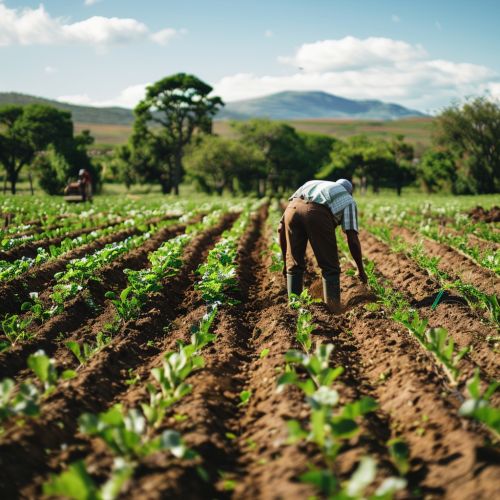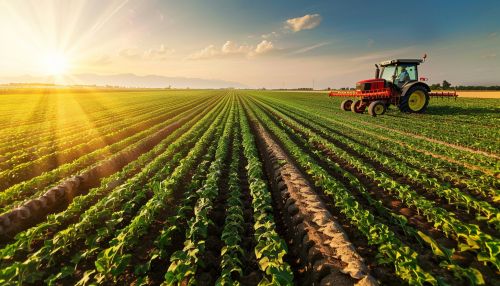Climate-Smart Agriculture
Introduction
Climate-Smart Agriculture (CSA) is an approach to developing the technical, policy, and investment conditions to achieve sustainable agricultural development for food security under climate change. It is characterized by three main objectives: sustainably increasing agricultural productivity and incomes; adapting and building resilience to climate change; and reducing and/or removing greenhouse gases emissions, where possible.


Background and Concept
The concept of CSA was first introduced by the Food and Agriculture Organization (FAO) of the United Nations in 2010 as a means to transform and reorient agricultural systems to support food security under the new realities of climate change. CSA is not a single specific agricultural technology or practice that can be universally applied but rather an approach that takes into account the diversity of social, economic and ecological contexts, including agro-ecological zones.
Objectives of Climate-Smart Agriculture
The three main objectives of CSA are:
- Sustainably increasing agricultural productivity and incomes: This involves adopting production methods that increase productivity and enhance livelihoods. It includes practices such as precision farming, integrated pest management, and agroforestry.
- Adapting and building resilience to climate change: This involves adopting practices that help farming systems withstand the impacts of climate change. This can include the use of crop diversification, conservation agriculture, and rainwater harvesting.
- Reducing and/or removing greenhouse gases emissions: This involves adopting practices that reduce emissions or sequester carbon in agricultural landscapes. This can include the use of cover crops, agroforestry, and sustainable soil management.
Climate-Smart Practices
There are numerous practices that can be considered climate-smart. Some of these include:
- Crop rotation: This is a method of growing different types of crops in the same area in sequential seasons to help restore soil fertility and prevent plant diseases and pests.
- Conservation agriculture: This is a set of soil management practices that minimize the disruption of the soil's structure and natural biodiversity.
- Agroforestry: This is an integrated approach of using the interactive benefits from combining trees and shrubs with crops and/or livestock.
- Aquaculture: This is the farming of aquatic organisms such as fish, crustaceans, mollusks, and aquatic plants under controlled conditions.
- Organic farming: This is a method of crop and livestock production that involves much more than choosing not to use pesticides, fertilizers, genetically modified organisms, antibiotics, and growth hormones.
- Precision farming: This is an approach to farm management that uses information technology to ensure that the crops and soil receive exactly what they need for optimum health and productivity.
- Integrated pest management: This is an effective and environmentally sensitive approach to pest management that relies on a combination of common-sense practices.
- Sustainable soil management: This involves the use of practices that protect the soil from erosion, improve its fertility, and promote the growth of healthy plants.
Challenges and Opportunities
While CSA offers a multitude of benefits, it is not without its challenges. These include the lack of awareness among farmers about CSA practices, lack of access to finance for implementing CSA practices, and the need for supportive policy and institutional environments. However, these challenges also present opportunities for stakeholders in the agricultural sector to work together to promote CSA, develop innovative financing mechanisms, and create enabling environments for CSA.
Conclusion
Climate-Smart Agriculture is an innovative approach to reorient and transform agricultural systems to effectively support development and ensure food security in a changing climate. While it presents some challenges, it also offers significant opportunities for sustainable agricultural development. As such, it is crucial for all stakeholders in the agricultural sector to work together to promote and implement CSA practices.
